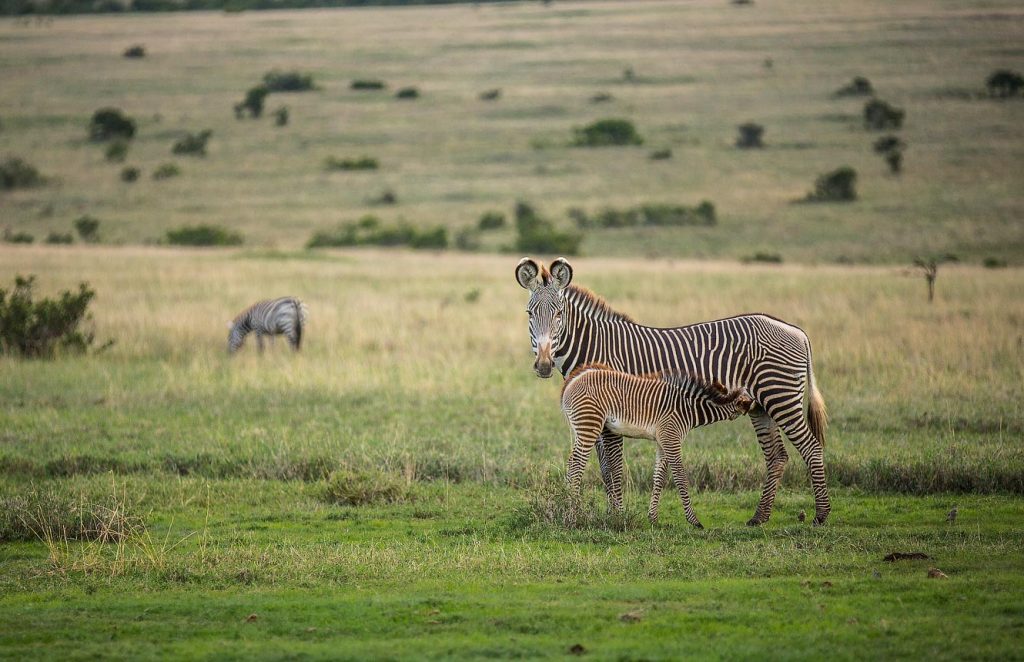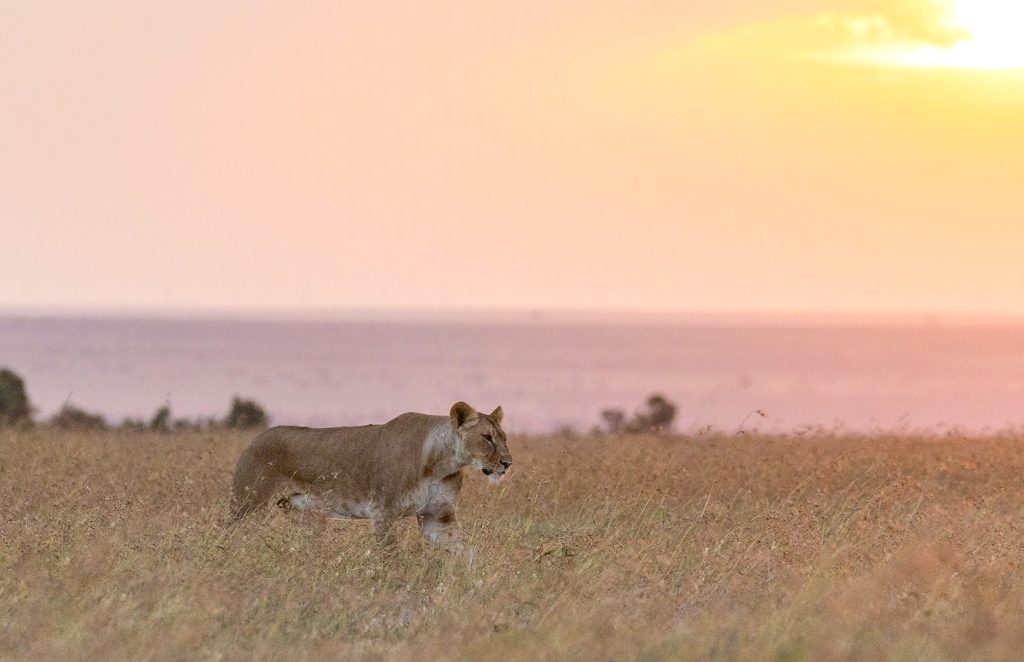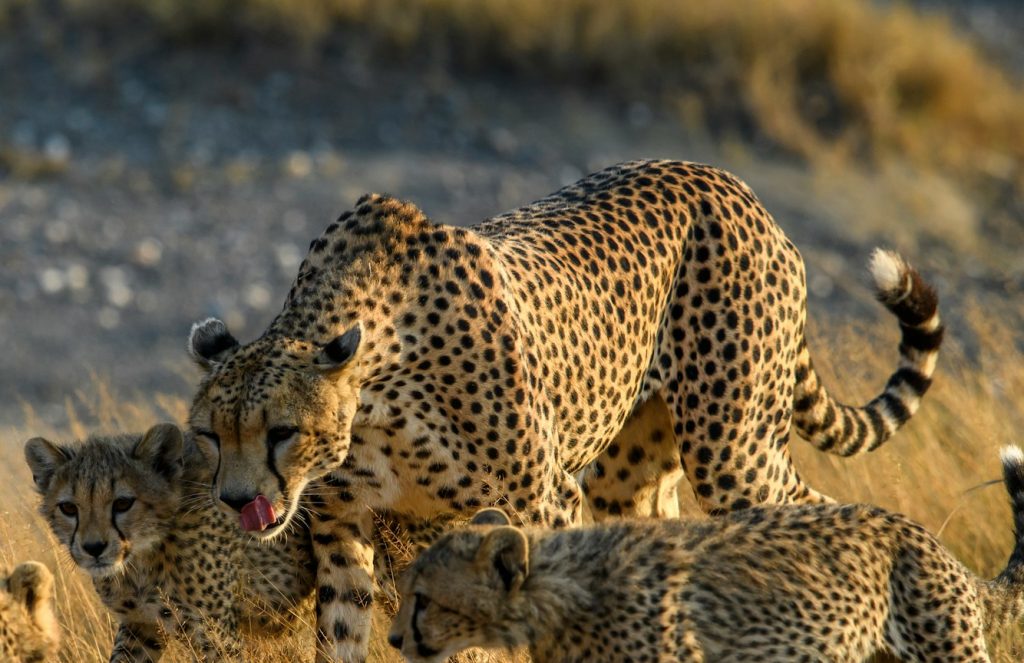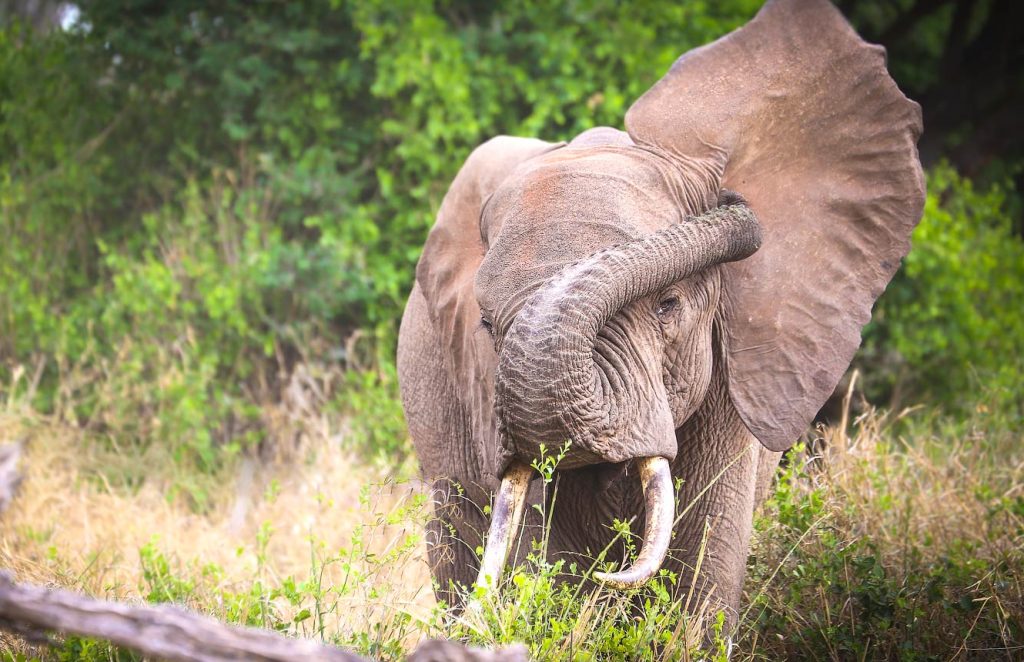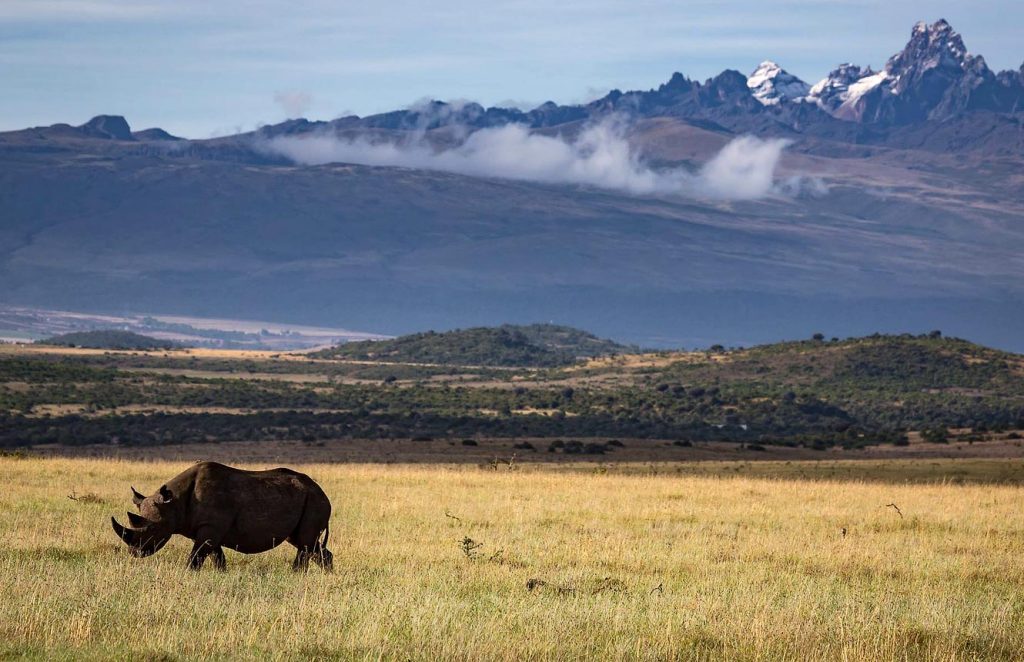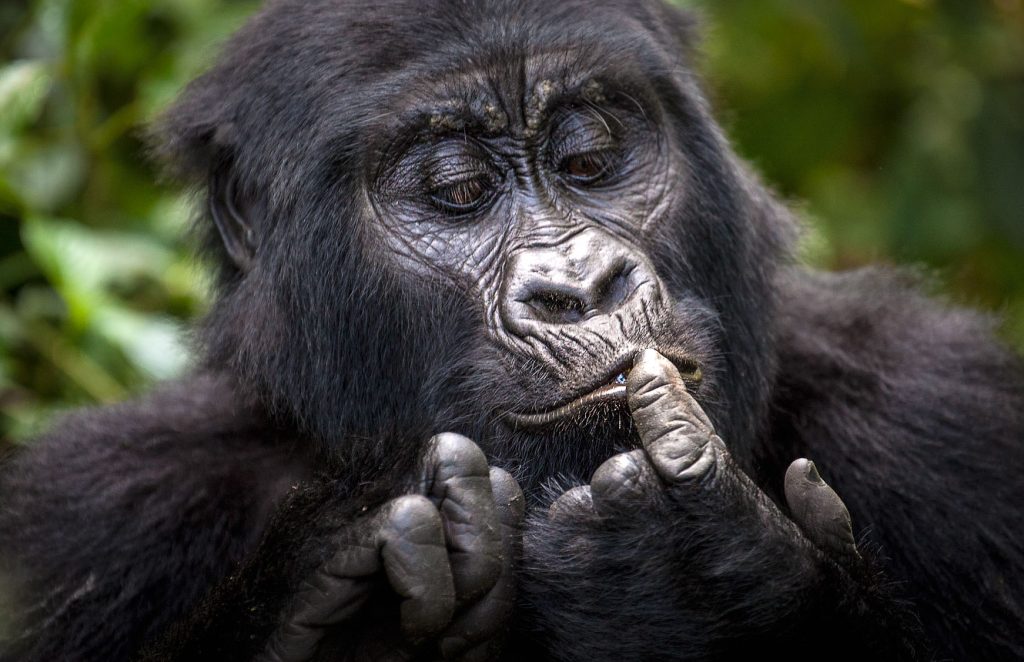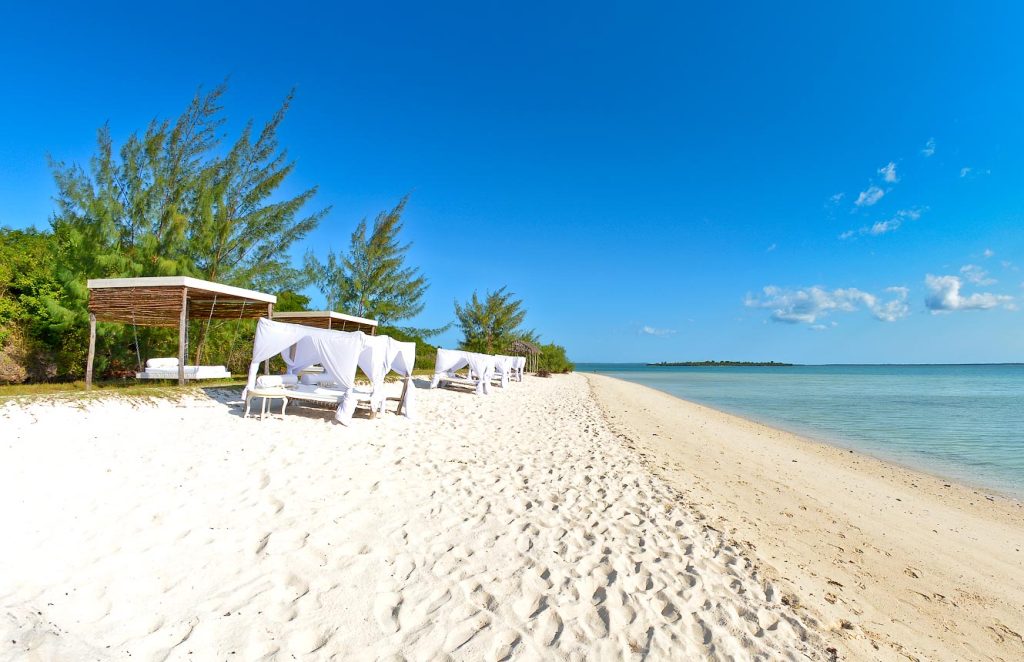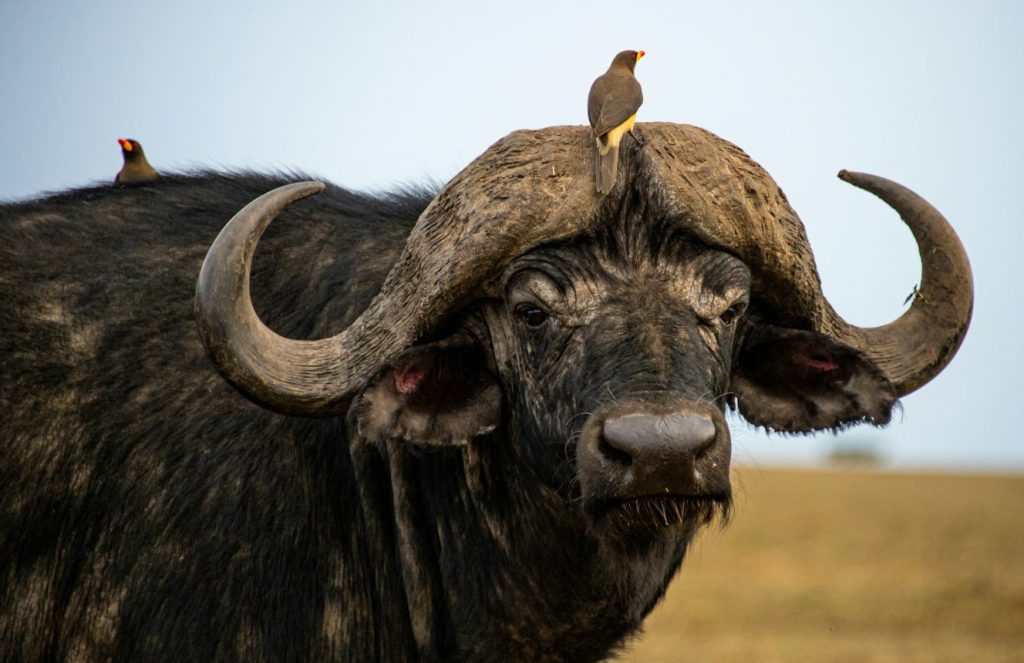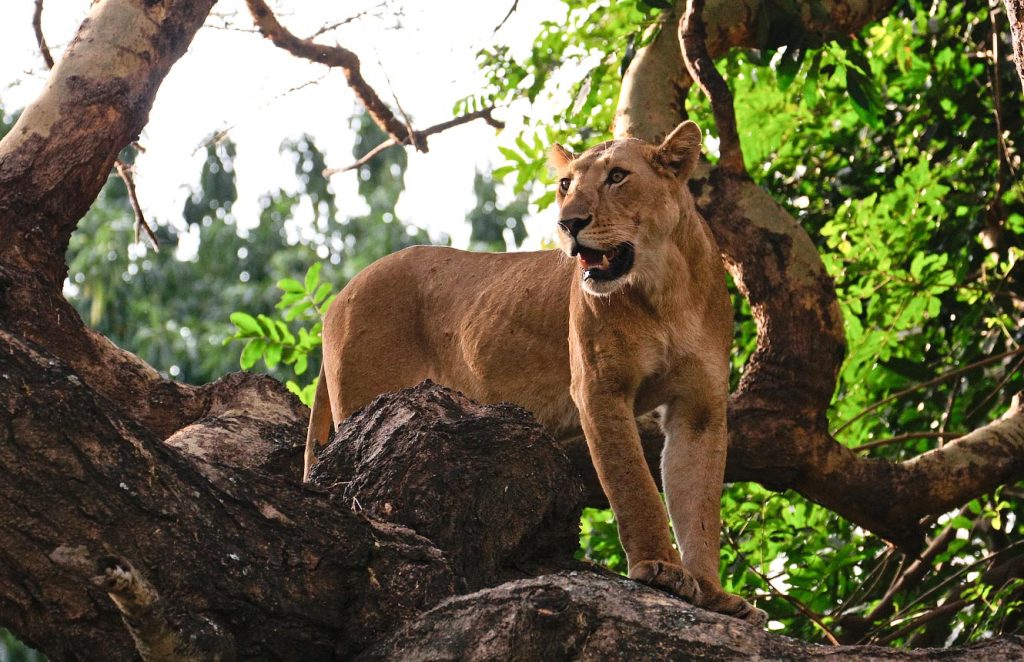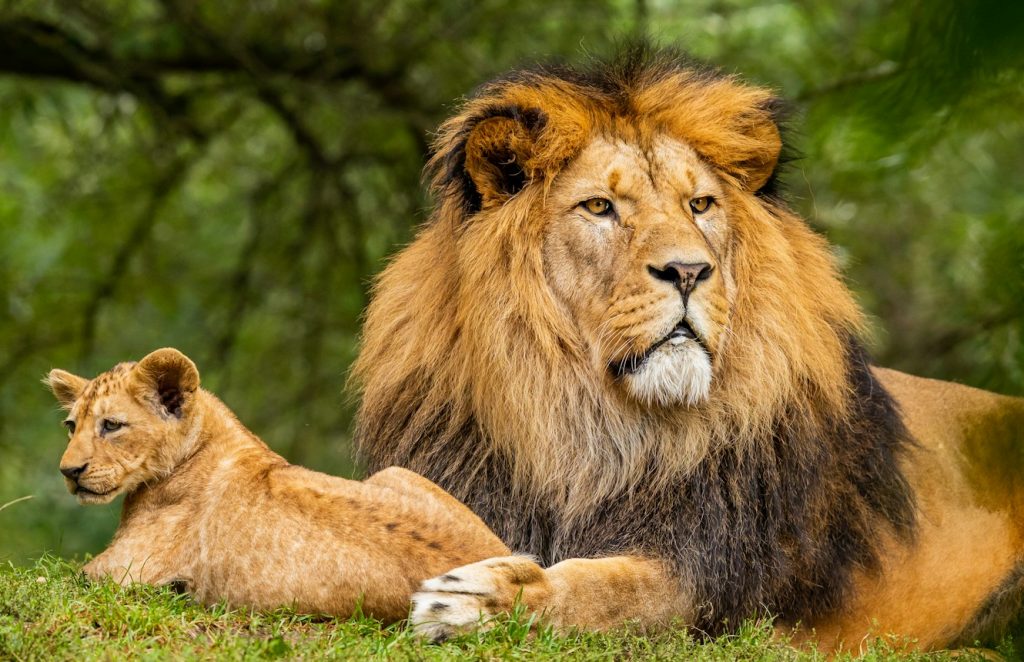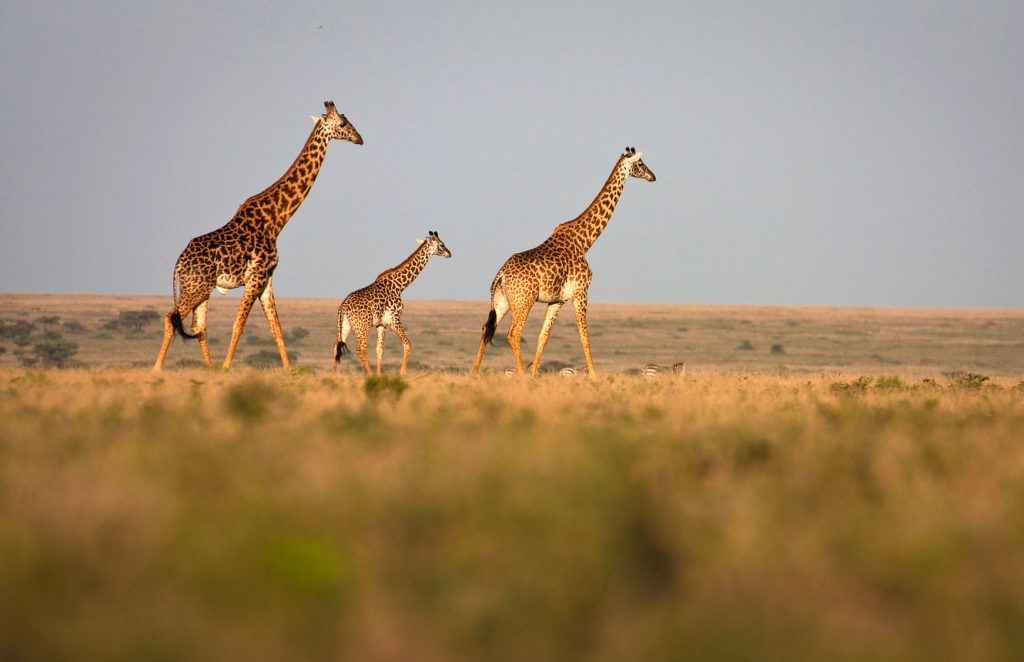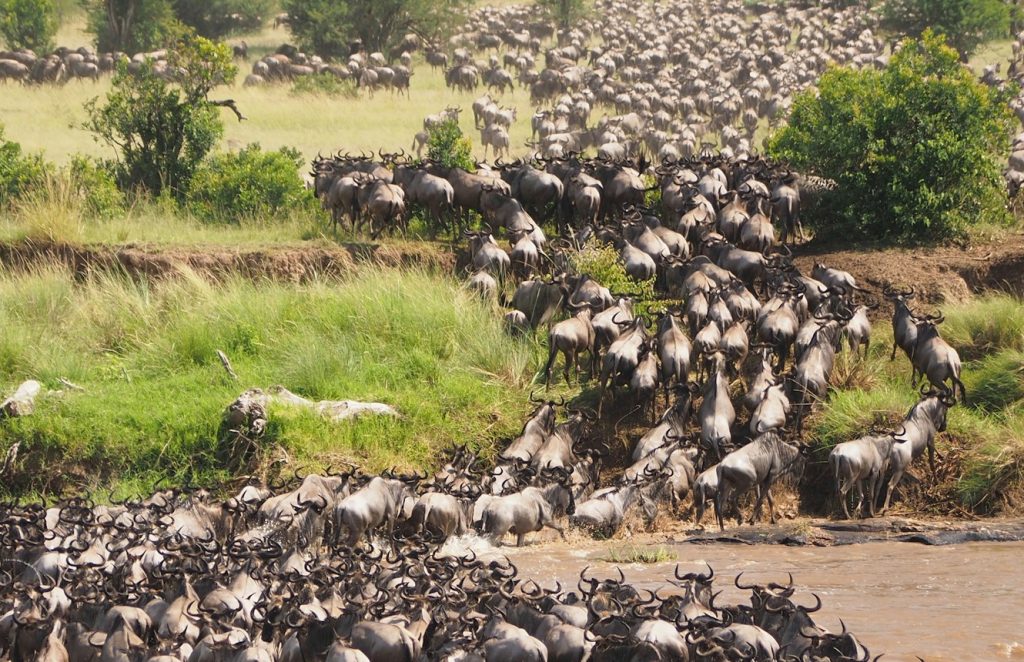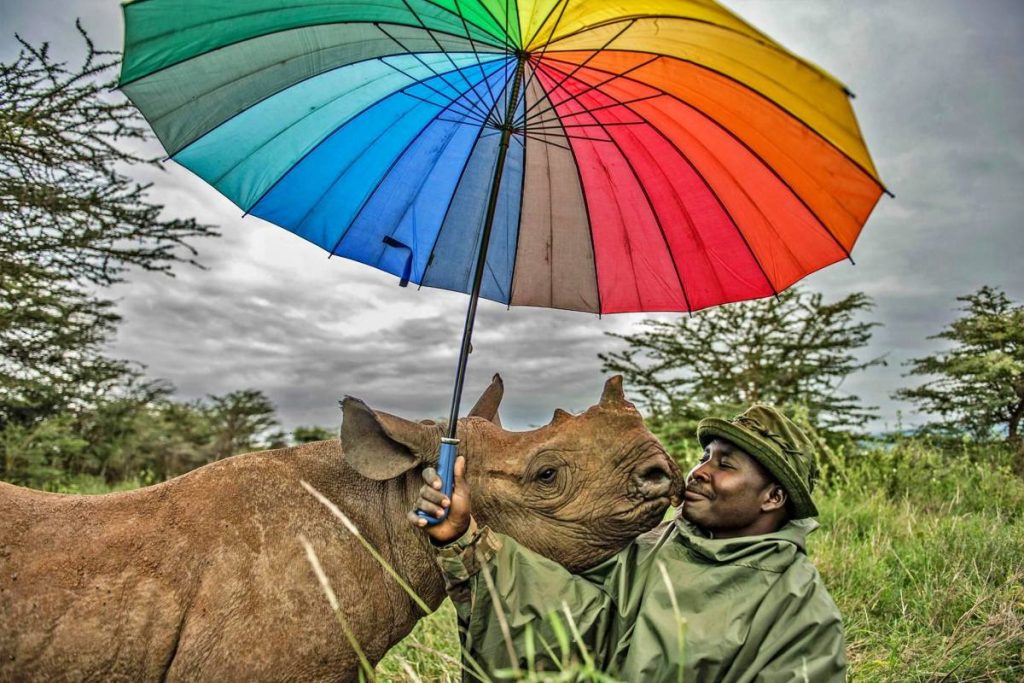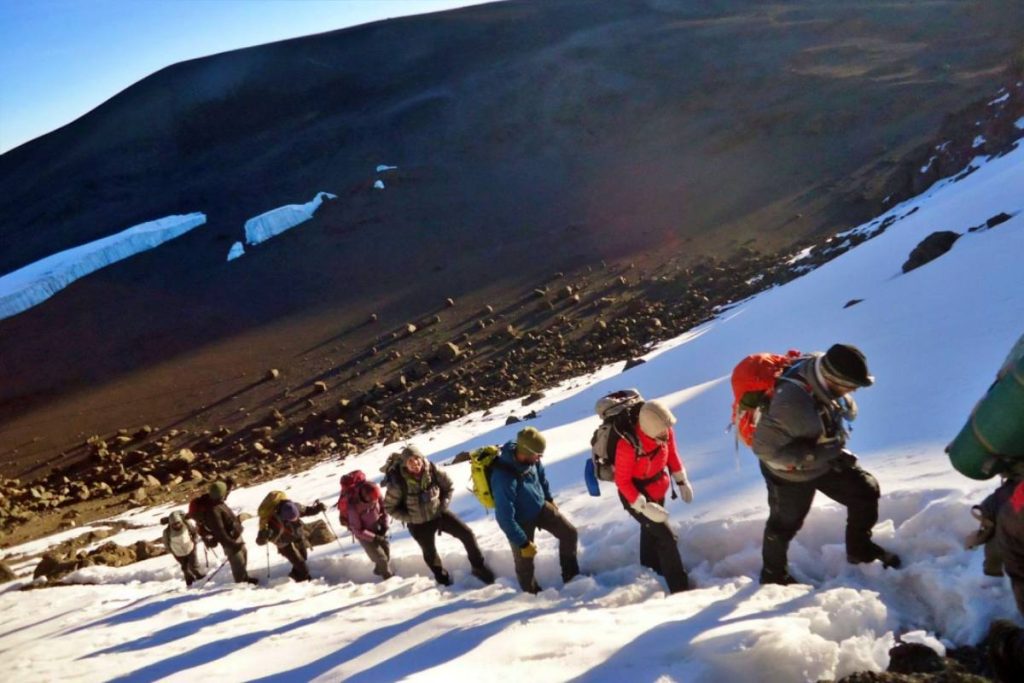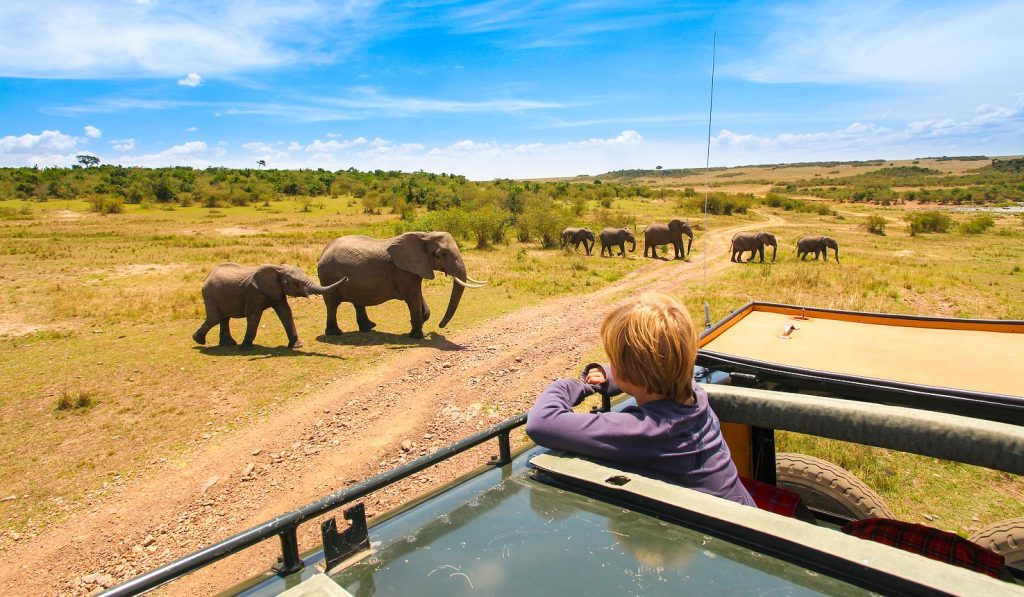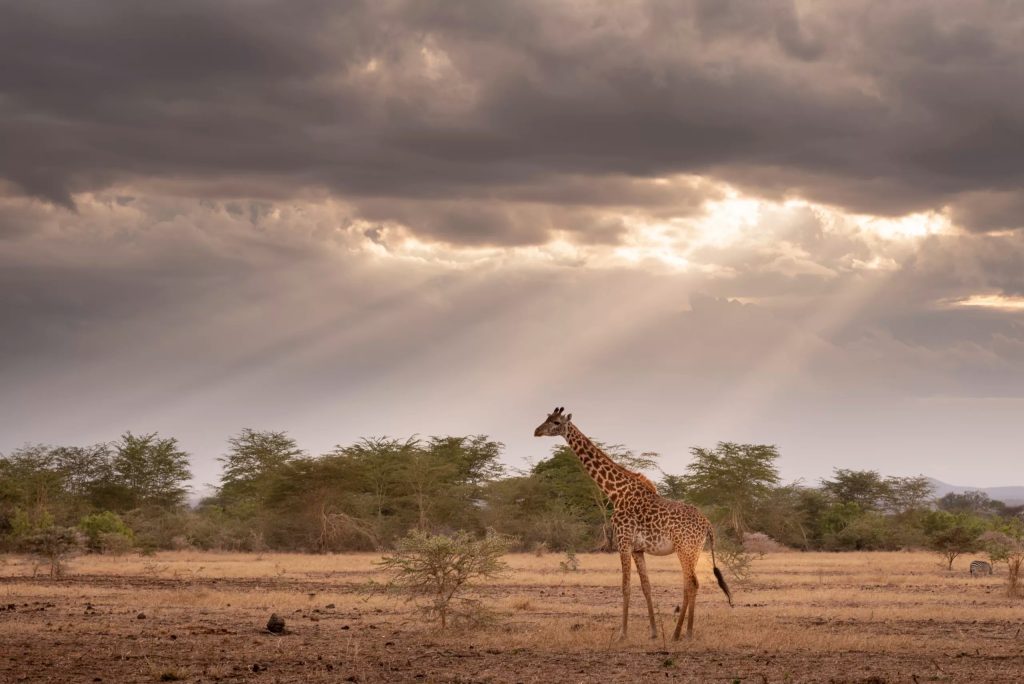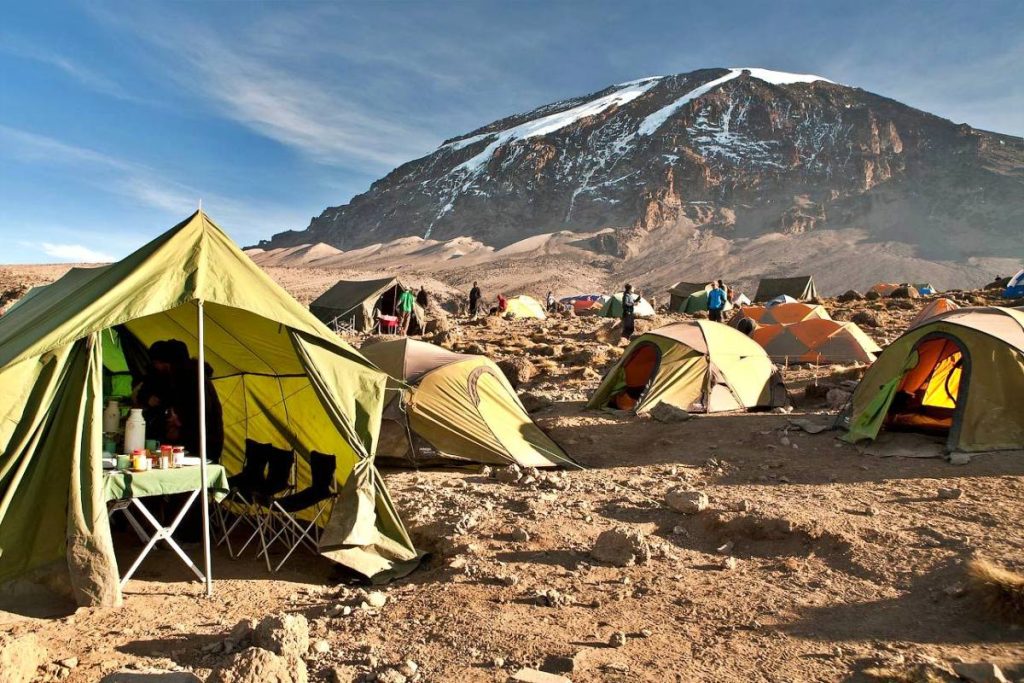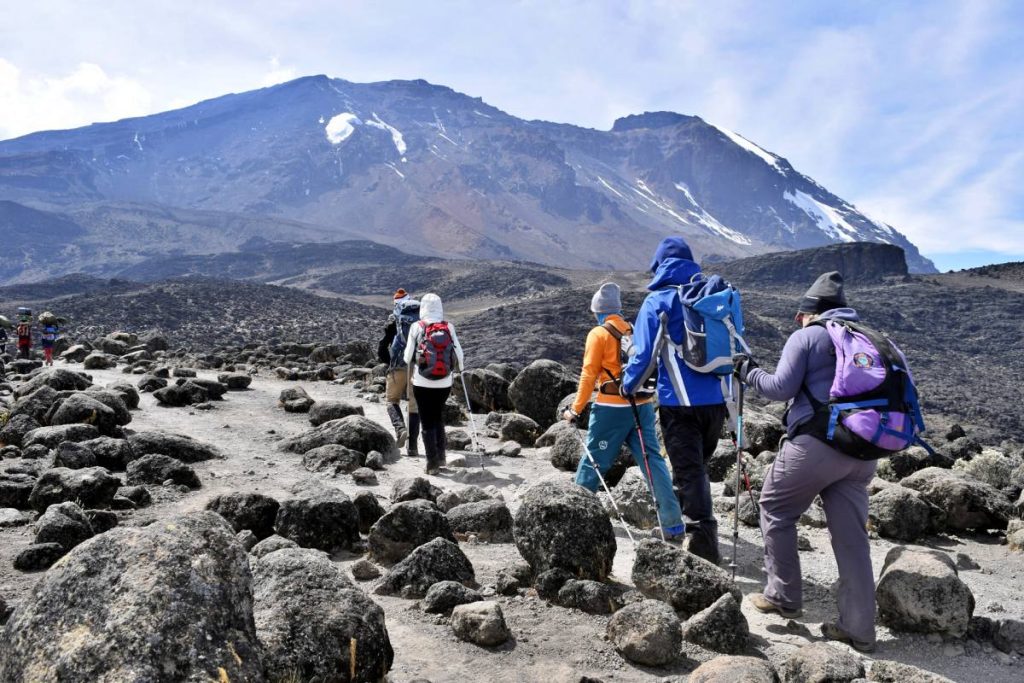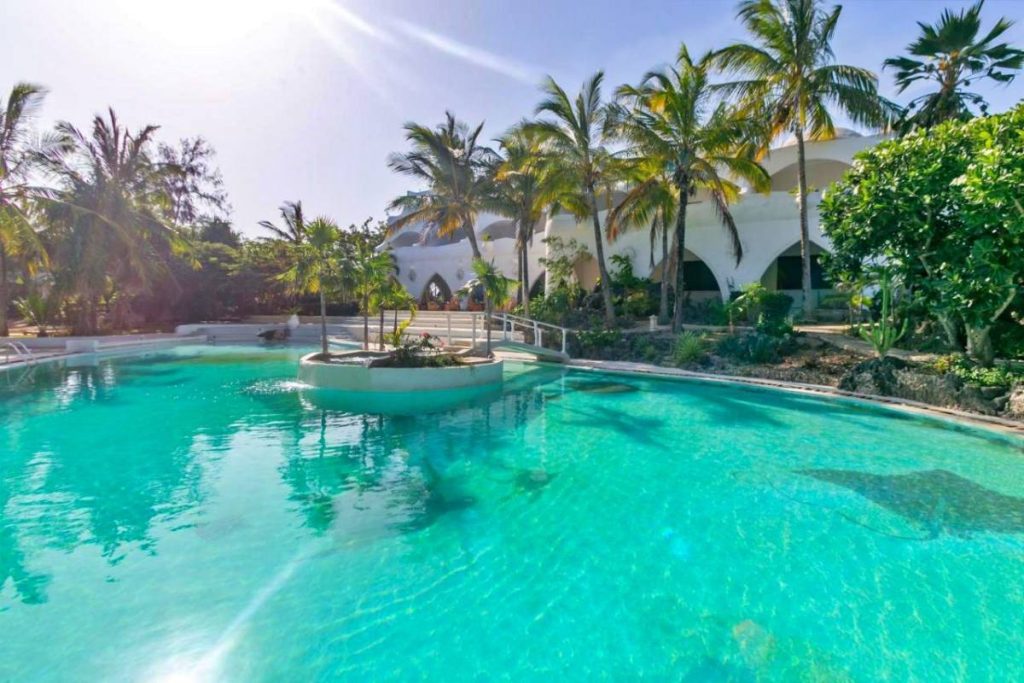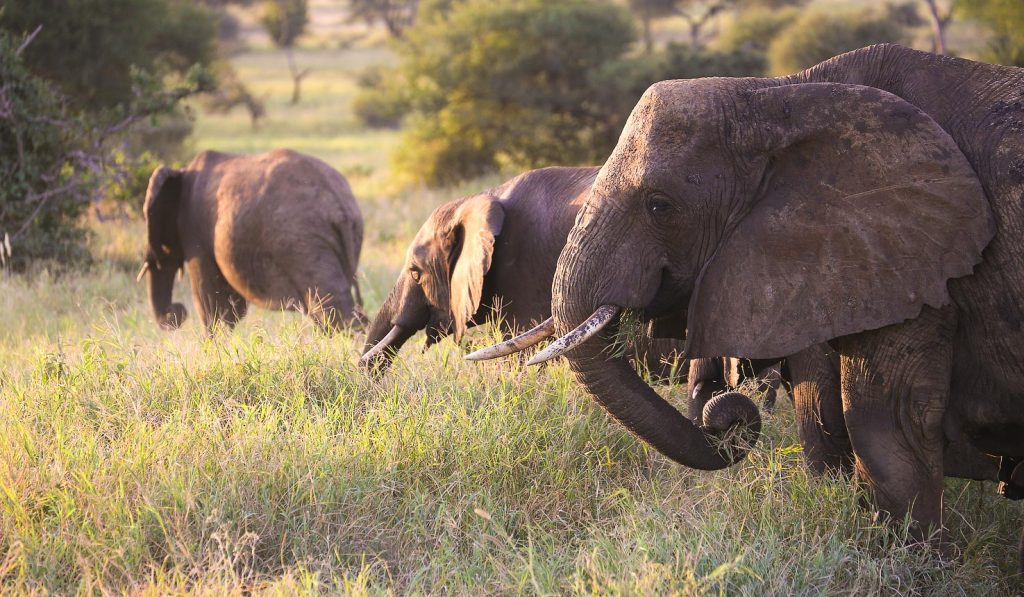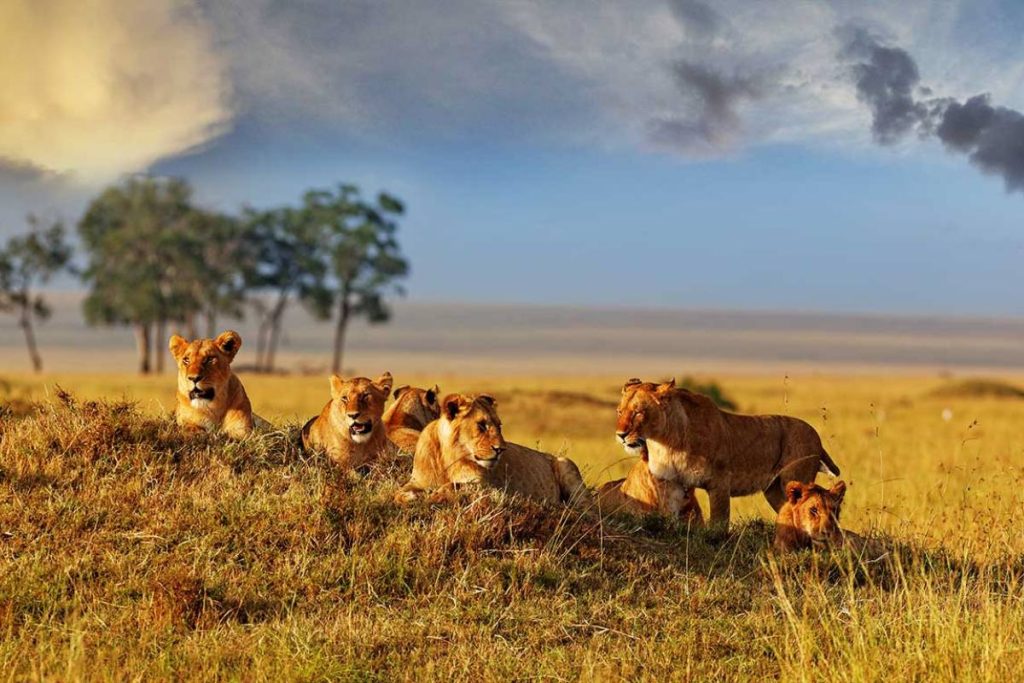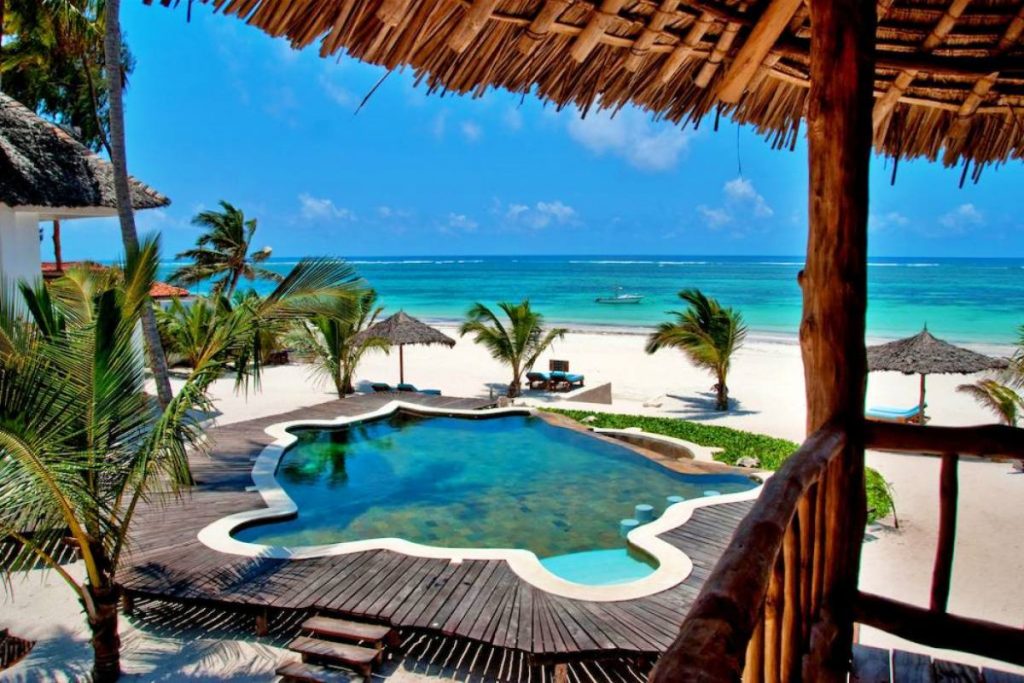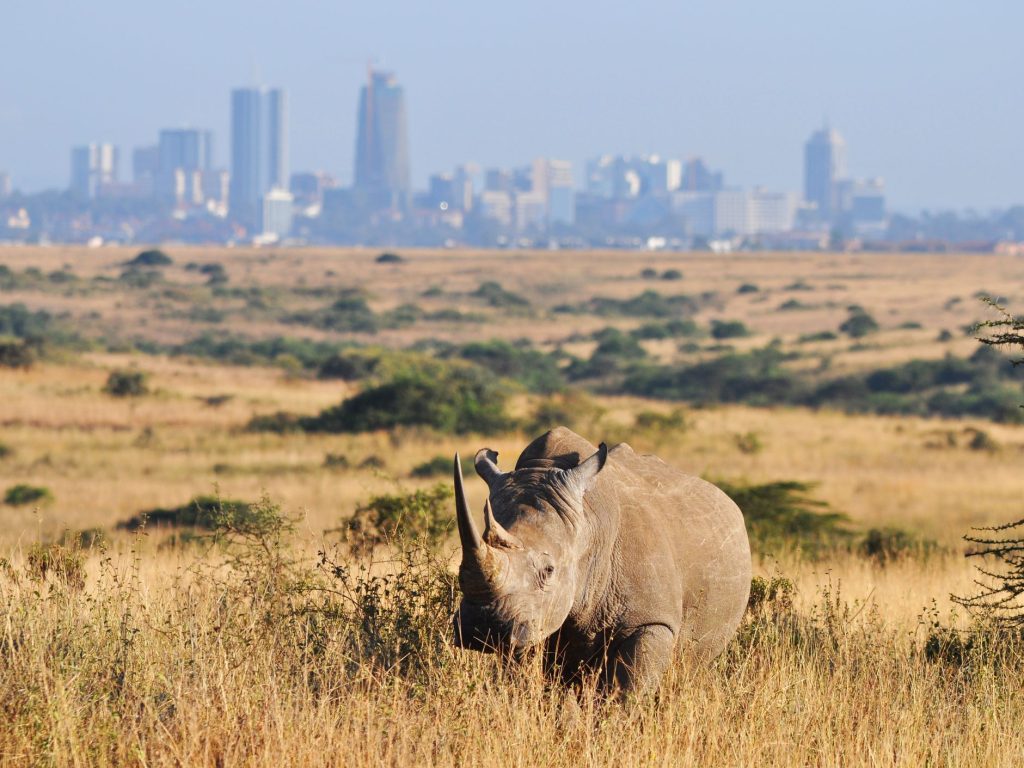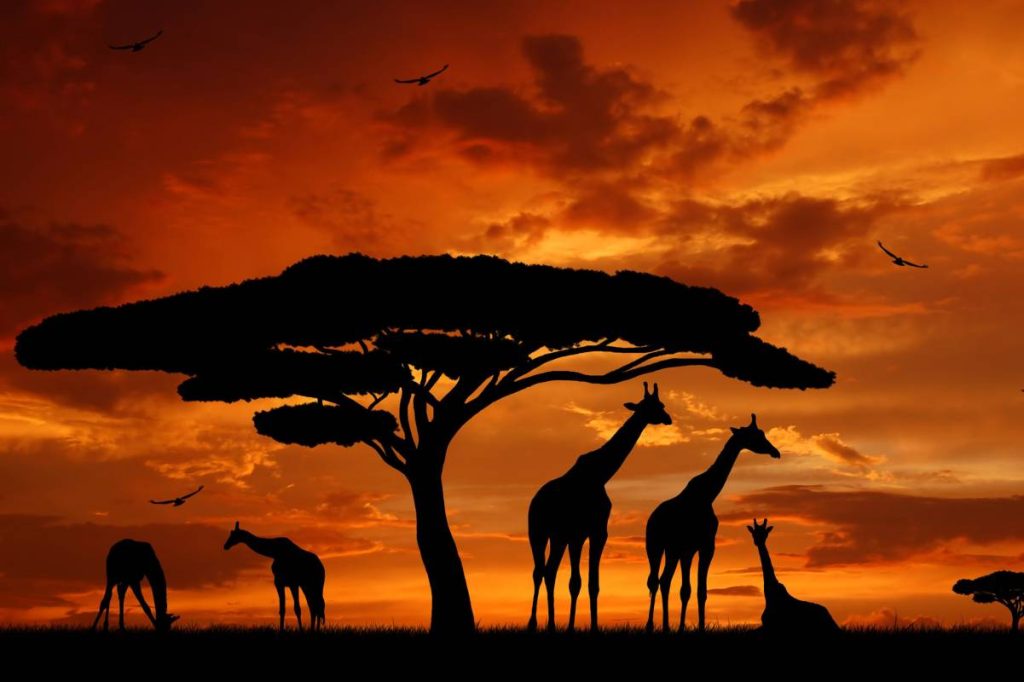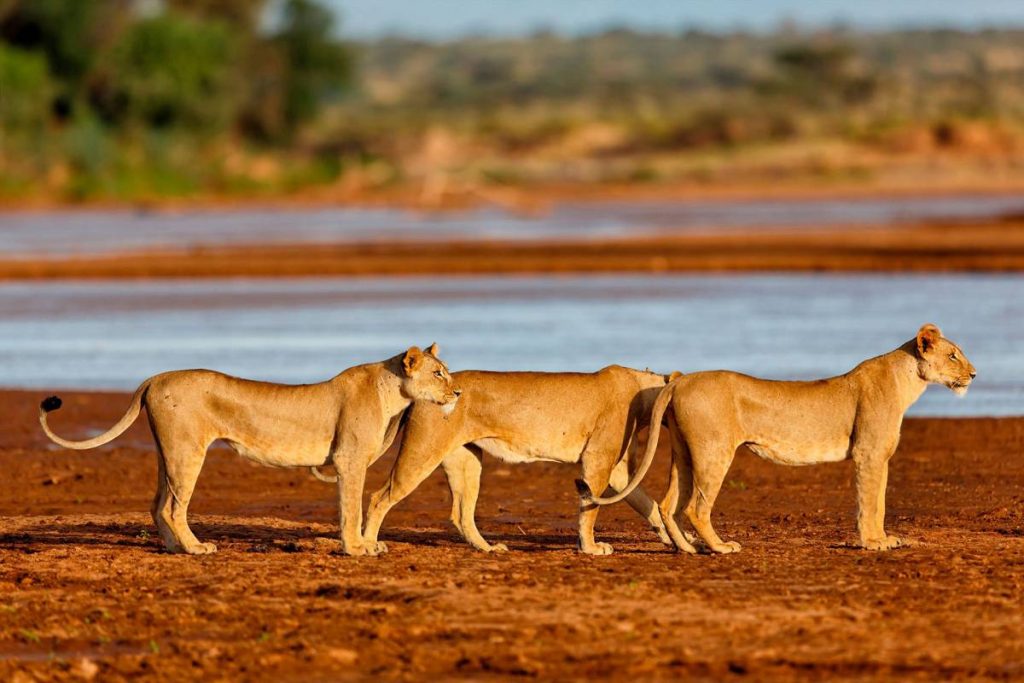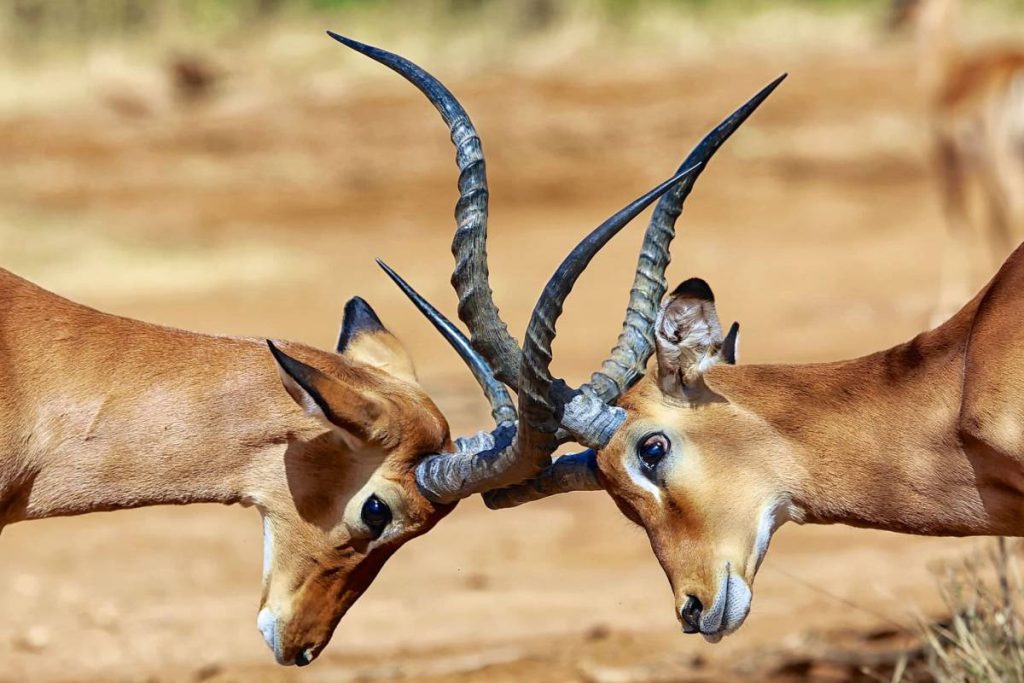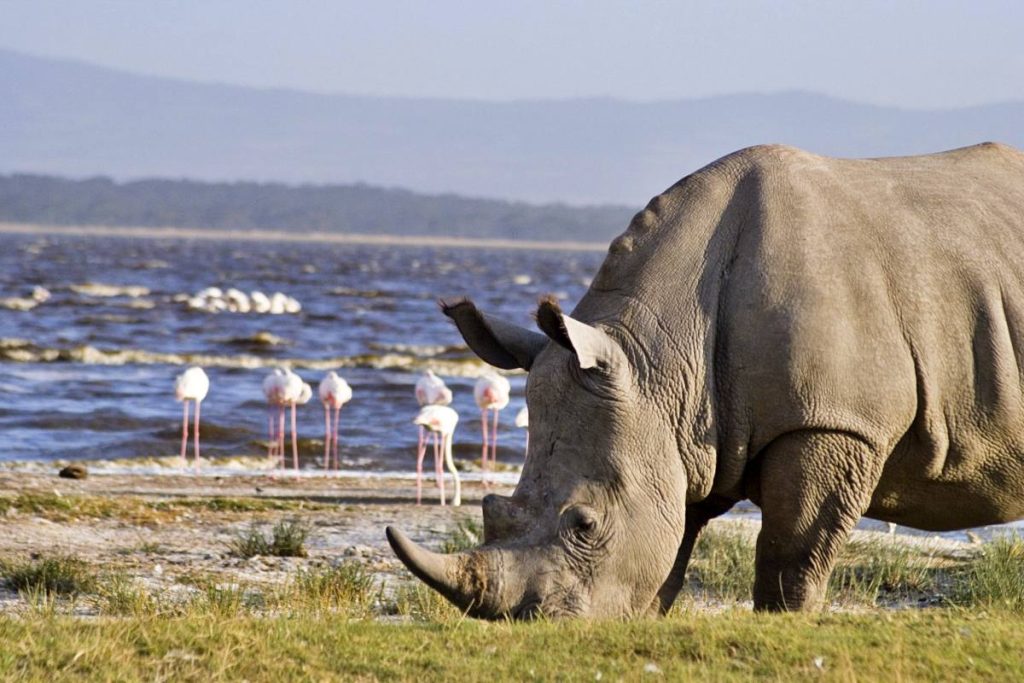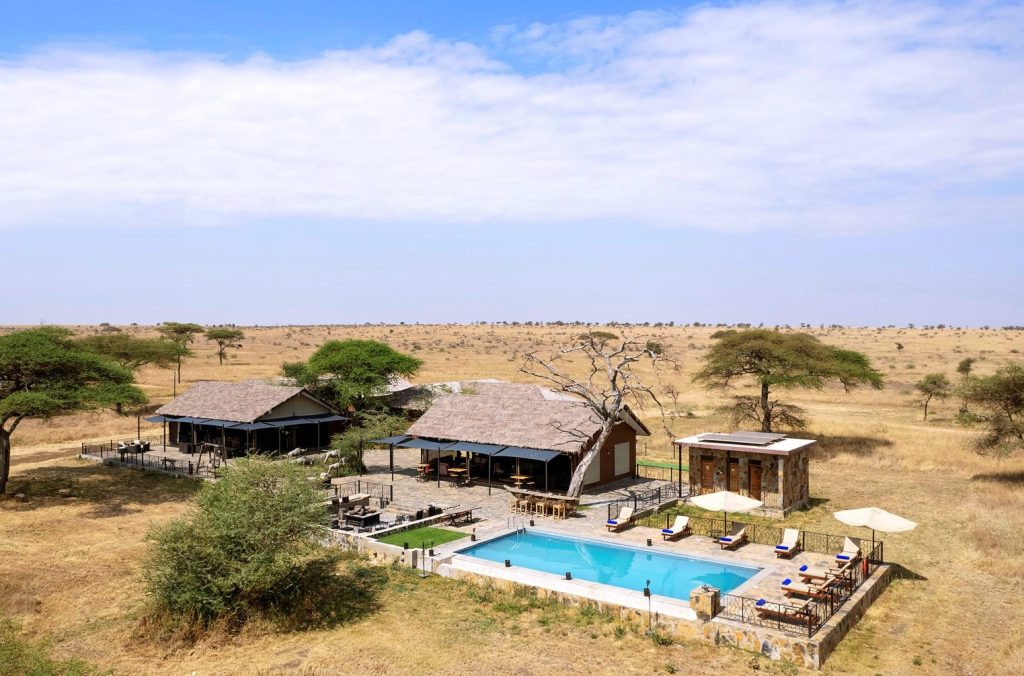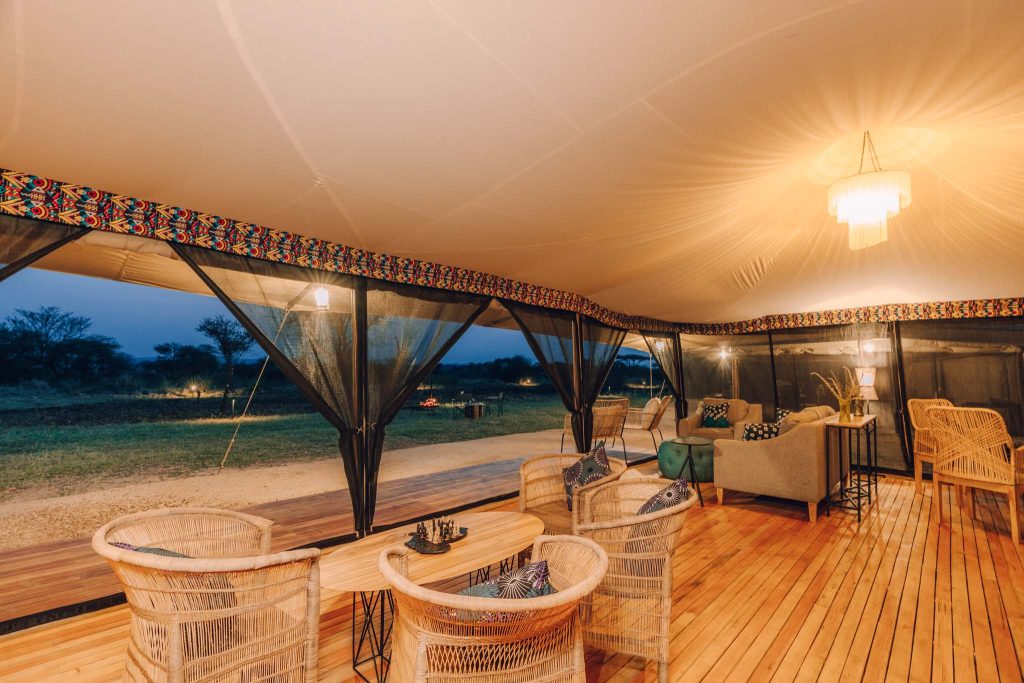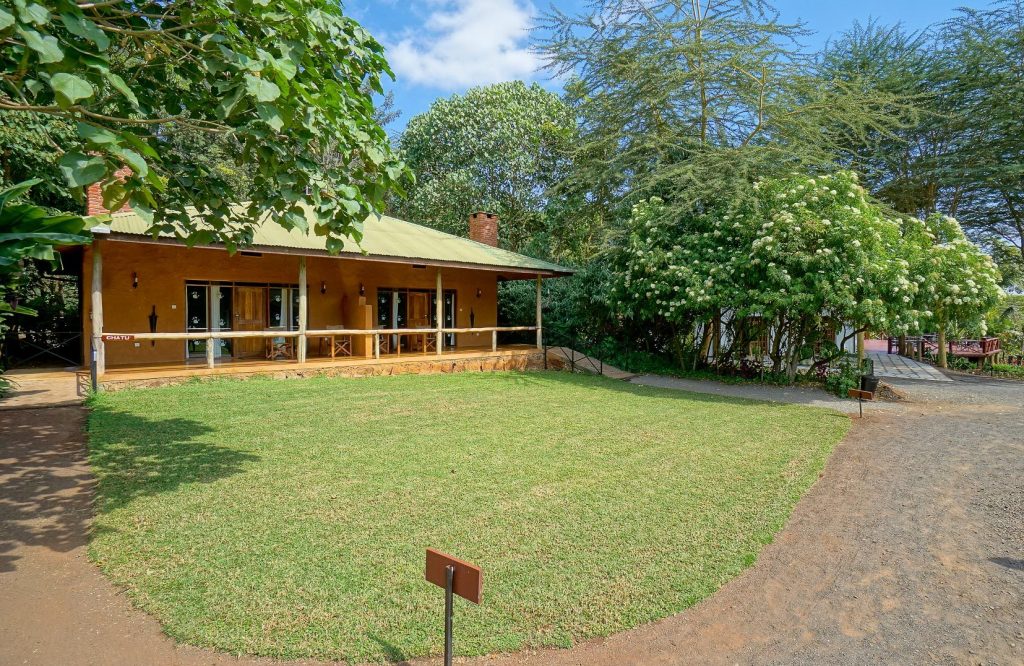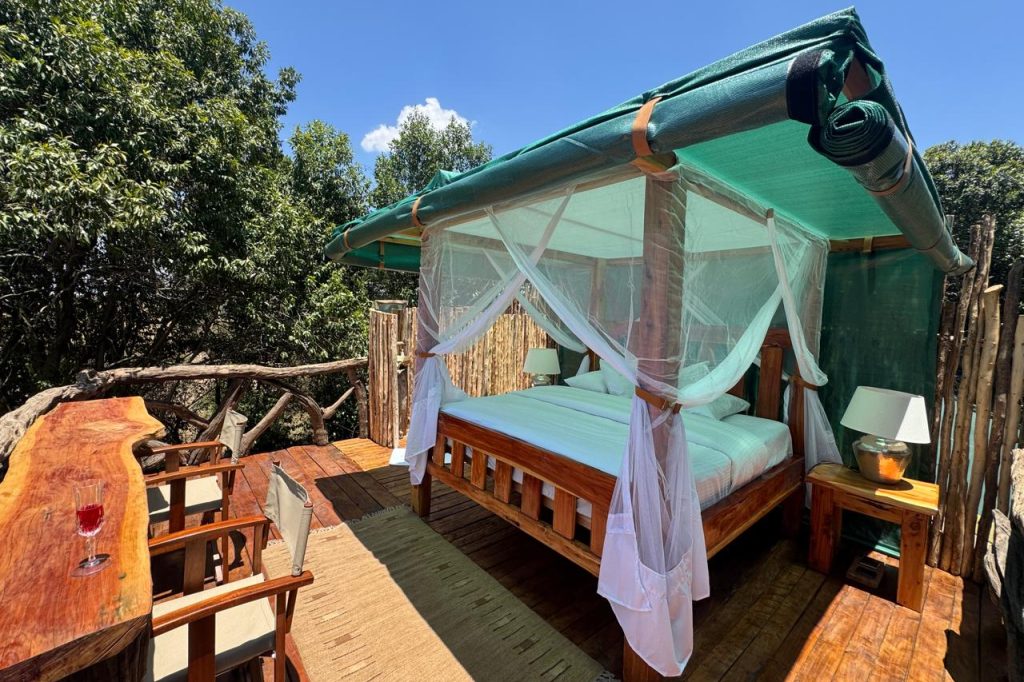A private guided safari is the way to get into East Africa and we offer just that with our local born and bred professional safari guides. They will lead you into the most beautiful destinations of Kenya and Tanzania. They have in-depth knowledge for the wildlife; flora and fauna that you will encounter along the safari trails. An extension to the surrounding coastal beaches of Diani and Zanzibar sums up a perfect holiday getaway. We put effort in to learning your needs and therefore create customized holiday packages just the way you like it. Our Kenya and Tanzania safari Holidays have a value for your money. Whatever your interest, we shall make it an out of African safari experience. We give you an Authentic East African Safari experience with unforgettable memories and lasting friendships.
Discover Our Best Kenya Safaris & Tours
Planning a Kenya safari? Discover our collection of the best Kenya safari tours and packages, featuring the country’s most spectacular wildlife destinations. Experience game drives through the Masai Mara National Reserve, home to the Great Migration and Africa’s Big Five. Marvel at Amboseli’s elephant families against Mount Kilimanjaro’s backdrop, spot rare species in Samburu National Reserve, and witness millions of flamingos at Lake Nakuru. Our Kenya safari packages range from 3 to 10 days and include luxury lodges, tented camps, and budget-friendly options. With expert safari guides, seamless logistics, and unforgettable wildlife encounters, we help you experience the very best of Kenya’s safari magic.
Discover Our Best Tanzania Safaris & Tours
Embark on an extraordinary Tanzania safari and discover nature’s most magnificent theatre. Witness the legendary Great Migration sweep across the Serengeti’s golden plains, encounter Africa’s Big Five in their untamed kingdom, and descend into the Ngorongoro Crater, the world’s largest intact volcanic caldera, where wildlife roams in breathtaking abundance. Track chimpanzees through Gombe Stream’s lush forests and marvel at Tarangire’s majestic elephant herds beneath ancient baobabs. Our curated safari experiences span 3 to 10 days, featuring opulent lodges, intimate tented camps, and exceptional value options. With expert guides orchestrating seamless journeys, your African adventure awaits, where every moment pulses with wonder, and every horizon promises magic.
Featured Safaris
Immerse yourself in the magic of Africa with our curated selection of wildlife safaris, where every detail is tailored to suit your personal preferences. From thrilling game drives to intimate cultural encounters, we pride ourselves on customizing each itinerary to match your interests, budget, and timeframe.
Kenya and Tanzania Safari Guide Month-by-Month
Pick for January
January delivers outstanding safari conditions with lush landscapes, pleasant weather, and exceptional wildlife viewing opportunities during calving season.
January experiences moderate to high tourist traffic. Photography conditions are outstanding with clear skies, lush landscapes, and extraordinary predator-prey action. January suits wildlife photographers, first-time safari-goers seeking guaranteed spectacular viewing, and families with winter school break constraints.
Weather and Conditions
Kenya’s shorter dry season brings predominantly sunny days with minimal rainfall. Comfortable temperatures range from 25-30°C during the day and 12-18°C at night across most safari regions. Recent rains have greened the landscape without creating muddy conditions, providing ideal game drive surfaces with excellent visibility.
Wildlife Highlights
The calving season creates spectacular predator-prey interactions as newborn wildebeest and zebra calves attract lions, leopards, and cheetahs. Resident wildlife remains highly visible across all parks, with big cats actively hunting and elephant family groups congregating near water sources. Amboseli National Park excels with large elephant herds and clear Kilimanjaro views, while Lake Nakuru offers impressive flamingo populations and excellent birding opportunities.
Crowds and Costs
January experiences moderate to high tourist traffic from European winter holidaymakers. Accommodation pricing remains at high-season levels, particularly during the first two weeks, before transitioning toward shoulder season rates. Book premier lodges 2-3 months in advance for the best availability.
January offers one of Tanzania’s most extraordinary wildlife spectacles—the wildebeest calving season in the southern Serengeti, when hundreds of thousands of calves are born within a concentrated period, attracting predators and creating unforgettable safari moments.
January sits within Tanzania’s shorter dry season, offering favorable weather with warm temperatures (25-30°C) and minimal rainfall. The landscape is lush and green from December’s short rains, creating vibrant scenery perfect for photography. The southern Serengeti plains around Ndutu host approximately 500,000 wildebeest calves born within a 2-3 week window. This synchronized birthing attracts massive predator numbers—lions, leopards, cheetahs, and hyenas converge on calving grounds, creating constant dramatic interactions. The flat plains offer outstanding visibility with concentrated herds relatively stationary.
January experiences moderate to high tourist traffic, particularly at Ndutu. Booking 2-3 months in advance is advisable. Pricing is at or near annual peaks. Photography conditions are outstanding with clear skies, lush landscapes, and extraordinary predator-prey action. January suits wildlife photographers, first-time safari-goers seeking guaranteed spectacular viewing, and families with winter school break constraints.
Pick for February
February continues January’s favourable conditions while offering decreased crowds and the possibility of witnessing early migration movements as wildebeest begin their northward journey.
Weather and Wildlife
Kenya’s driest month features excellent weather with 25-30°C daytime temperatures. Vegetation continues drying, improving wildlife visibility as animals concentrate near permanent water sources. The calving season peaks in the southern Serengeti with activity extending into the southern Mara. Predator viewing intensifies as dry conditions concentrate prey, creating outstanding opportunities for observing lions, leopards, and cheetahs.
Value and Visitor Numbers
Tourist numbers decrease from January’s holiday peak, offering improved availability and shoulder season pricing. This combination of excellent conditions and better value makes February ideal for wildlife enthusiasts and photographers seeking diverse subjects without peak season crowds.
Calving continues through early to mid-February, typically peaking in the first two weeks. Hundreds of thousands of young calves accompany herds, still vulnerable to predation. Viewing opportunities remain excellent throughout February, with herds concentrated and accessible in the southern Serengeti.
All parks maintain outstanding conditions. February represents prime time across Tanzania’s diverse park system, including Tarangire’s excellent elephant viewing. Tourist traffic and costs remain at high season levels. Photography conditions are exceptional, with February often providing the year’s best light quality. February appeals to wildlife photographers seeking peak calving season, serious wildlife enthusiasts, and travelers for whom budget is secondary to experience quality.
Pick for March
March represents Tanzania and Kenya’s primary transition month as long rains approach, offering a calculated risk for adventurous travellers seeking lower costs and potentially excellent dry conditions.
Weather Unpredictability
Early March typically maintains dry conditions with sunny days, while mid to late March brings the long rains with afternoon thunderstorms and increasing cloud cover. Once the rains begin, landscapes transform rapidly as grasslands green and flowers bloom within days.
Wildlife and Value
Before the rains commence, wildlife remains concentrated and visible. Resident predator viewing stays excellent until rainfall disperses prey animals. Tourist numbers decline significantly after mid-month, particularly as travellers avoid approaching the rainy season. Pricing transitions to low season rates, offering 15-25% savings below peak season, especially in late March.
March represents a transitional month as the Great Migration begins moving northward and the long rains approach. Weather becomes increasingly unpredictable, with early March typically maintaining dry conditions but long rains usually beginning mid to late March. Temperatures remain warm (24-29°C) while humidity increases.
Herds begin dispersing from concentrated calving grounds, moving north following fresh grazing. March often features wildebeest rutting (mating) season, characterized by territorial bulls making distinctive calls and engaging in dominance displays. Viewing opportunities are good to excellent, though herds are more dispersed. Tourist numbers decline, particularly after mid-month, with pricing transitioning from high to shoulder season (10-20% below peak rates).
March suits flexible travelers comfortable with uncertainty, photographers interested in rutting behavior, and budget-conscious visitors finding transitioning prices.
Pick for April
April brings Tanzania and Kenya’s wettest conditions with sustained rainfall transforming landscapes into lush green paradises while challenging safari logistics.
Conditions and Considerations
Heavy rainfall exceeds 200-300mm in highland areas, with rain occurring on most days. Roads become challenging, particularly in parks with black cotton soil like Amboseli. Wildlife disperses across vast areas as abundant water becomes available everywhere, making concentrations difficult to find.
Advantages for Adventurers
Despite challenges, April offers dramatic cost savings of 30-50% below peak season, virtually empty parks, spectacular birdlife with migrants in breeding plumage, and the unique experience of witnessing nature’s green season transformation. Serious birders and extreme budget travellers find April particularly rewarding.
Heavy, sustained rainfall occurs frequently, often as intense afternoon thunderstorms. Roads become challenging in some areas, though main Serengeti and Ngorongoro routes remain passable. Many remote camps close during April.
Migration herds continue northward, typically reaching western Serengeti regions by mid to late April. Herds spread across vast areas following fresh grazing, making them harder to locate. General dispersal occurs as abundant water and fresh grazing disperse wildlife across all parks. However, many antelope species birth during green season, and migratory birds are present in maximum numbers with spectacular breeding plumage.
April sees Tanzania’s lowest tourist numbers with dramatically reduced rates (30-50% below peak season). April suits extreme budget travelers, serious birders, and adventurous souls genuinely embracing challenges who prioritize solitude over optimal viewing.
Pick for May
May continues the long rainy season though with gradually improving conditions as the month progresses. Early May maintains April’s rainy character, but mid to late May sees decreasing rainfall frequency. Roads improve through May as drying occurs. By late May, most areas are accessible again.
Improving Conditions
Early May maintains April’s rainy character, but mid to late May sees decreasing rainfall frequency and intensity. Roads improve through the month as drying occurs. Wildlife begins moving toward permanent water sources, improving viewing, though not yet reaching dry season concentrations.
Migration Movement
Wildebeest and zebra herds continue moving north through the Serengeti toward Kenya. While the main herds typically don’t reach Mara until June-July, this northward movement signals the beginning of the annual migration cycle. Excellent birding continues with migratory species present against peak landscape lushness.
Migration herds continue moving north following new grass in western Serengeti, particularly the Grumeti region. Herds remain dispersed but are beginning to coalesce somewhat. As temporary water sources dry, wildlife starts moving toward permanent water, improving viewing. Migratory birds are still present with continued breeding activity.
May remains quiet with minimal tourist traffic. Pricing remains low season (25-40% below peak), particularly early May. May appeals to budget-conscious travelers, flexible adventurers, birders, and photographers interested in lush landscapes and dramatic storm light.
Pick for June
June marks the beginning of Tanzania and Kenya’s dry season, featuring the Migration’s dramatic Grumeti River crossings in Tanzania and the crucial arrival of Great Migration herds in the Maasai Mara, creating extraordinary wildlife viewing opportunities.
Perfect Safari Conditions
Predominantly dry weather brings comfortable 24-28°C days and cool 12-17°C nights. Vegetation remains relatively lush from recent rains while visibility improves as grasses dry—the ideal combination of green landscapes with excellent wildlife spotting. Roads are good and improving throughout June.
Great Migration Arrival
Over one million wildebeest and hundreds of thousands of zebras cross from Tanzania into the Maasai Mara during June, though exact timing varies yearly. Late June sometimes features the season’s first Mara River crossings—dramatic spectacles ranking among nature’s most incredible events. Predator activity increases dramatically with massive prey herds attracting lions, leopards, cheetahs, and hyena clans.
Planning Requirements
Tourist numbers increase substantially, particularly in late months. Book Mara lodges 2-3 months ahead as pricing transitions from low season to high season rates.
Herds continue moving north, encountering the Grumeti River lined with large Nile crocodiles. June typically sees the first major Grumeti crossings, offering spectacular drama with fewer viewing vehicles than later Mara River crossings. Viewing opportunities are good to excellent, particularly late June. Dry season onset improves viewing across Tanzania’s entire park system, with wildlife concentrations increasing.
June sees increasing tourist numbers, though not yet peak season levels. Booking 2-3 months ahead is advisable. Pricing transitions from shoulder to high season. Photography conditions are excellent with clear skies and dramatic crossing subjects. June suits wildlife enthusiasts wanting river crossings without peak season crowds and photographers prioritising shooting angles and light.
Pick for August
August extends July’s exceptional conditions, maintaining peak Migration viewing with continued Mara River crossings. Weather mirrors July’s excellence with clear skies dominating. Dry conditions are extreme—vegetation is brown, dust is significant, and water sources are limited, maximizing wildlife concentrations.
Weather Perfection
Consistently excellent conditions feature minimal rainfall, clear skies, and comfortable temperatures with sunny 22-26°C days and cool 10-15°C nights. July represents Kenya’s coolest month, making midday game drives comfortable. Clear skies and excellent light create superb photography opportunities.
Migration Spectacle
Peak Migration presence brings one to two million wildebeest plus hundreds of thousands of zebras and gazelles carpeting the Mara plains. Mara River crossings become regular occurrences with herds crossing and re-crossing, creating multiple viewing opportunities. The drama of thousands of animals plunging into crocodile-infested waters creates unforgettable wildlife experiences.
Predator Paradise
Prey abundance attracts enormous predator numbers. Lions are everywhere, leopards hunt actively, cheetahs pursue prey openly on plains, and hyena clans follow migrating herds. Predator-prey interactions occur constantly, providing exceptional viewing and photography opportunities.
Crowds and Investment
Peak tourist numbers mean vehicle congestion at popular crossing points and lodges. Booking 4-6 months ahead is essential for premier Mara properties. Pricing reaches annual maximums—40-60% above low season rates. Despite costs and crowds, the spectacular wildlife experiences justify the investment for most travellers.
Mara River crossings continue throughout August, often with peak frequency. Herds move back and forth across the river, creating multiple crossing opportunities. This period offers the most reliable crossing viewing of the year. All parks feature maximum wildlife concentrations around limited water sources, with Tarangire representing peak month for elephant viewing.
August maintains or slightly exceeds July’s peak tourist numbers. Booking 4-6 months ahead remains essential with pricing at peak season maximums. August appeals to the same traveler profile as July: those seeking guaranteed spectacular experiences and families with August holiday constraints.
Pick for September
August extends July’s exceptional conditions, maintaining peak Migration viewing with continued Mara River crossings. Weather mirrors July’s excellence with clear skies dominating. Dry conditions are extreme—vegetation is brown, dust is significant, and water sources are limited, maximizing wildlife concentrations.
Continued Excellence
Migration herds remain throughout September with continued river crossing activity, though some animals begin drifting toward Tanzania late month. The weather stays excellent with minimal rainfall and 24-29°C days. Wildlife concentrations remain impressive across all parks.
Photography Paradise
September provides ideal photography conditions—August’s incredible subjects with fewer vehicles competing for shooting angles. Excellent light quality, dramatic wildlife interactions, and decreased tourist pressure create optimal circumstances for capturing stunning images.
Value Improvement
Tourist numbers decrease noticeably after mid-September as European summer holidays end. Pricing begins transitioning from peak to shoulder season with 10-20% decreases below peak rates, particularly late September. Book 2-3 months ahead for the best lodge selection.
Wildlife concentrations peak as water sources reach minimum levels.
Mara River crossings continue early to mid-September, though frequency decreases from August peaks. By late September, herds begin the southward return journey, crossing back into Tanzania. This southward migration receives far less attention but offers excellent viewing with minimal crowds. All parks maintain maximum concentrations with excellent viewing.
September sees decreasing tourist numbers, particularly after mid-month. Booking 2-3 months ahead suffices. Pricing begins transitioning from peak to shoulder season (10-20% below peak rates). Photography conditions are excellent with peak subjects and manageable vehicle numbers. September suits experienced safari enthusiasts seeking optimal conditions without peak crowds, wildlife photographers, and value-conscious travelers.
Pick for October
October represents a transition month with variable conditions. Early October typically maintains dry conditions with sunny, warm days (25-30°C). However, short rains usually begin mid to late October, bringing afternoon thunderstorms. When rains begin, landscapes transform rapidly from brown to green
October varies significantly depending on timing. Early October maintains dry season benefits while late October sees short rains. Migration herds depart for Tanzania’s Serengeti, though exact timing varies yearly. Tourist numbers drop significantly, with shoulder season pricing offering 15-30% savings below peak rates.
Herds return to Tanzania, moving south following fresh grazing produced by short rains. Eastern Serengeti often provides good October viewing as herds pass through. Fewer tourists mean more intimate experiences. All parks offer outstanding resident wildlife viewing, particularly early month before rains disperse animals.
October sees moderate to light tourist numbers. Pricing clearly enters shoulder season (15-30% below peak). October suits flexible travelers comfortable with uncertainty, budget-conscious visitors, and those interested in southward Migration movements.
Pick for November
November falls within Kenya and Tanzania’s short rainy season, bringing moderate rainfall typically as afternoon thunderstorms. Expect rain on roughly half of days. Temperatures are warm (25-30°C) with high humidity. Roads cope reasonably well with most parks remaining fully accessible.
Regular rainfall occurs on roughly half of the days, typically as afternoon thunderstorms less intense than April’s long rains. Wildlife disperses across broader areas, though most parks remain fully accessible. Low tourist numbers, minimal crowds, and 25-40% cost savings below peak season attract budget-conscious and adventurous travellers.
Herds continue southward, dispersing across vast areas as water becomes abundant and fresh grazing widespread. Finding them requires skilled guides and patience. Wildlife dispersal occurs across all parks as abundant water breaks up concentrations. However, migratory birds arrive for northern winter with spectacular breeding plumage, and some species birth during short rains.
November sees low tourist numbers with pricing at low season (25-40% below peak). November suits budget-conscious travelers, serious birders, adventurous souls comfortable with rain, and those prioritizing solitude and savings over optimal viewing conditions.
Pick for December
December combines variable weather—with short rains ending mid-month—with holiday tourist influx. Early December typically maintains November’s rainy character, but mid to late December sees rains tapering and dry conditions returning. Temperatures are warm (25-30°C) with humidity decreasing as December progresses.
Early December maintains rainy conditions, but mid to late December sees rains tapering with dry conditions returning. Wildlife viewing improves throughout December. Christmas week through New Year brings a substantial tourist influx with holiday travellers, requiring 6+ months advance booking for top lodges charging holiday premiums.
Herds complete their southward journey, arriving at southern Serengeti calving grounds by late December. Massive concentrations reform in preparation for January-February calving season. All parks offer good to excellent viewing, improving significantly as conditions dry. Late December provides excellent positioning for witnessing the calving season’s beginning.
December experiences split dynamics: early month sees low tourist numbers with low season pricing, while late December (Christmas-New Year) sees significant holiday traffic with high season rates returning. December suits holiday travelers with timing constraints, those seeking improved conditions after short rains, and anyone positioning for calving season viewing.
Customize Your Safari with Kenya Tour Operators
For More Exciting & Better Value Safari
What we Offer
Kenya Tanzania Top Destinations
Immerse yourself in the magic of Africa with our curated selection of wildlife safaris, where every detail is tailored to suit your personal preferences. From thrilling game drives to intimate cultural encounters, we pride ourselves on customizing each itinerary to match your interests, budget, and timeframe. Contact Kenya Tanzania Safari today!
Top Safari Lodges & Camps in Kenya & Tanzania
Browse our curated selection of Kenya and Tanzania’s finest safari accommodations, each chosen for location, wildlife access, and authentic African experience. From Serengeti safari camps positioned along migration routes to Masai Mara lodges overlooking river crossings, Ngorongoro Crater lodges with caldera views to Amboseli camps beneath Kilimanjaro, our properties place you at the heart of East Africa’s most spectacular ecosystems. Find luxury lodges with spa facilities and fine dining, or intimate tented camps where lions roar at night. All feature expert guides, quality game drives, and genuine East Africa safari experiences.
Discover What Our Adventurers Have to Say
Frequently Asked Questions (FAQ)
The best time for a Kenya and Tanzania safari depends on what you want to experience. For optimal wildlife viewing and the Great Migration river crossings in the Masai Mara, July to October offers excellent conditions with dry weather and concentrated wildlife. However, East Africa is a year-round safari destination. The shoulder seasons of January-February and June offer fantastic wildlife viewing with fewer crowds and better value. While March to May brings the long rains, this period features lush landscapes, newborn animals, and significantly lower prices. Our expert guides know the best locations for each season to maximize your safari experience.
A combined Kenya and Tanzania safari can accommodate various budgets. Budget safaris typically start around $200-300 per person per night, mid-range safaris with comfortable accommodations and excellent guides run $500-700 per person per night, while luxury experiences can exceed $1,000+ per person per night. Our customized packages include all park fees, accommodations, meals, game drives, and professional guides. The final cost depends on your travel dates, accommodation preferences, number of travelers, and safari duration. We specialize in creating value-packed itineraries that match your budget without compromising on the quality of your African safari experience.
Yes, Kenya Tanzania safaris are very safe when booked with reputable operators like us. Our professional safari guides are extensively trained in wildlife behavior and safety protocols, with years of experience navigating East Africa’s wilderness. We follow strict safety guidelines, provide comprehensive briefings upon arrival, and maintain constant communication with our camps and lodges. Wildlife viewing is conducted from secure safari vehicles, and our guides know exactly how to position vehicles for optimal and safe viewing. With over decades of experience operating safaris in East Africa, we prioritize your safety while ensuring an authentic and thrilling safari adventure.
On a combined Kenya and Tanzania safari, you’ll have excellent opportunities to see the Big Five (lion, elephant, leopard, buffalo, and rhino), along with cheetahs, giraffes, zebras, wildebeest, hippos, crocodiles, and numerous antelope species. The Serengeti-Masai Mara ecosystem hosts millions of animals including the spectacular Great Migration. Each national park offers unique wildlife experiences: Amboseli for elephants against Mount Kilimanjaro’s backdrop, Ngorongoro Crater for dense wildlife populations, Tarangire for elephant herds, and the Serengeti for predator action. Our experienced guides’ intimate knowledge of animal behavior and movements ensures you’re positioned in the right place at the right time for incredible wildlife encounters.
Yes, most international visitors require visas for both Kenya and Tanzania. The good news is that both countries offer convenient e-visa systems that allow you to apply online before your trip. For travelers visiting both countries, the East Africa Tourist Visa is available, providing entry to Kenya, Tanzania, and Uganda with a single visa, offering excellent value and convenience. Visa requirements and fees vary by nationality, so we recommend applying at least 2-3 weeks before your departure. Our team provides detailed guidance on visa requirements and the application process as part of our comprehensive pre-trip support to ensure smooth entry into East Africa.
Pack light, neutral-colored clothing (khaki, olive, beige) suitable for warm days and cooler mornings and evenings. Essential items include comfortable walking shoes, a wide-brimmed hat, sunglasses, sunscreen (SPF 30+), insect repellent, and a light jacket or fleece. For photography enthusiasts, bring a camera with a telephoto lens (200-300mm minimum), extra batteries, and memory cards. Binoculars significantly enhance wildlife viewing. Many safari lodges offer laundry services, so you can pack lighter. Don’t forget personal medications, a refillable water bottle, and any specific toiletries you prefer. We provide a detailed packing list customized to your specific itinerary and travel dates to ensure you’re fully prepared for your adventure.
Absolutely! Kenya and Tanzania offer wonderful family safari experiences. Our family-friendly safaris are designed with children in mind, featuring shorter game drives, flexible schedules, and accommodations that welcome young travelers. Many lodges offer family rooms and special activities for children including junior ranger programs and cultural visits. The wildlife viewing is spectacular and educational for children of all ages. Kenya’s parks like Amboseli and Masai Mara are particularly suitable for families with their shorter driving distances between camps. Our experienced guides are excellent with children, making game drives engaging and fun while teaching about wildlife and conservation. We customize family safaris to match your children’s ages and interests.
Both Kenya and Tanzania offer world-class safari experiences with access to the same Serengeti-Masai Mara ecosystem. Kenya’s Masai Mara is smaller but has higher wildlife density, making it ideal for shorter safaris with guaranteed sightings. The infrastructure is well-developed with more flight options and generally lower costs. Tanzania’s Serengeti is nearly ten times larger, offering more diverse habitats and a sense of remote wilderness. Tanzania also features unique destinations like Ngorongoro Crater and Mount Kilimanjaro. A combined Kenya and Tanzania safari gives you the best of both worlds: Kenya’s accessibility and vibrant Maasai culture, plus Tanzania’s vast wilderness and iconic crater. Our expertly crafted itineraries seamlessly combine both countries for the ultimate East African experience.
Yellow Fever vaccination is required for entry into both Kenya and Tanzania if you’re arriving from or have transited through a Yellow Fever endemic country. Beyond this requirement, recommended vaccinations include Hepatitis A and B, Typhoid, and ensuring your routine vaccinations (tetanus, measles, etc.) are up to date. Anti-malaria medication is strongly recommended for safari areas. We advise consulting with a travel medicine clinic 6-8 weeks before your trip for personalized medical advice based on your health history and specific itinerary. Our team provides detailed health information for your safari regions, but professional medical consultation ensures you’re fully protected for your East African adventure.
Transportation during your safari is included in our packages with comfortable, well-maintained 4×4 safari vehicles equipped with pop-up roofs for optimal wildlife viewing and photography. Our experienced driver-guides handle all road transportation between parks and camps. For longer distances, domestic flights are available to save time and maximize your wildlife viewing hours. When crossing between Kenya and Tanzania, we manage all border crossing logistics seamlessly. All our vehicles have charging ports for cameras and phones, comfortable seating, and coolers with bottled water. Your safari vehicle becomes your front-row seat to Africa’s greatest wildlife show, and our guides ensure every journey is part of the adventure.
The Great Migration is one of nature’s most spectacular events, featuring over 2 million wildebeest, zebras, and antelope moving in a continuous cycle through the Serengeti-Masai Mara ecosystem following seasonal rains and fresh grass. The famous Mara River crossings, where herds brave crocodile-infested waters, typically occur in Kenya’s Masai Mara from July to October. However, the migration is year-round at different locations: December-March finds the herds in Tanzania’s southern Serengeti for calving season, while April-June sees them moving north. Each phase offers unique wildlife viewing opportunities. Our expert guides track migration patterns in real-time and position you at the best locations to witness this incredible natural phenomenon.
Absolutely! Customization is our specialty. Unlike fixed group tours, we create personalized safari experiences tailored exactly to your preferences, interests, budget, and travel style. Whether you’re interested in photography safaris, honeymoon experiences, family adventures, cultural encounters with Maasai communities, combining safari with Zanzibar beaches, or climbing Mount Kilimanjaro, we design itineraries that match your vision. We work with accommodations across all budget ranges and can adjust trip duration, park selections, and activities to suit your needs. Our local expertise and established relationships across Kenya and Tanzania ensure you receive the best value and authentic experiences. Simply share your interests and budget, and we’ll craft your perfect East African adventure.



